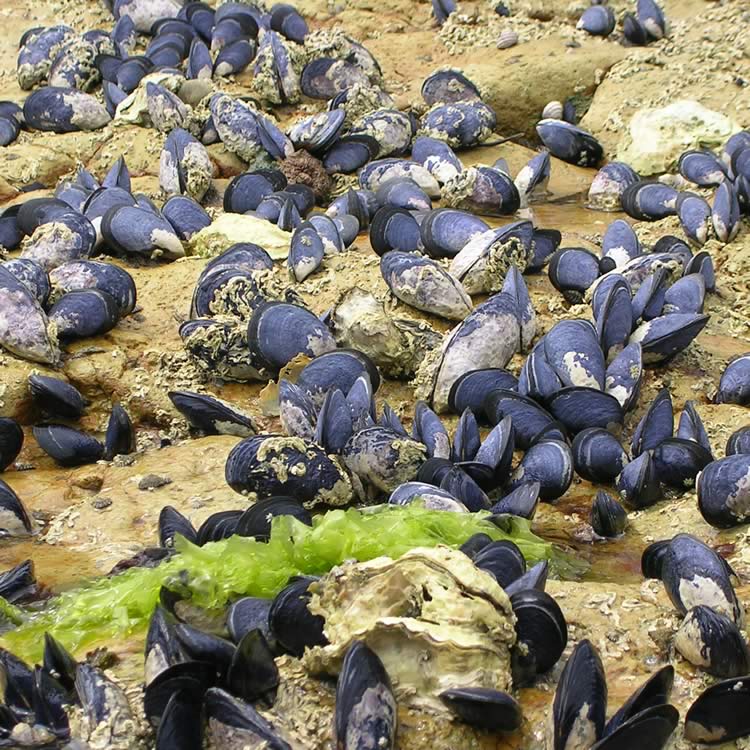Blue mussel

Community type
Habitat type
Rocky reefs, kelp beds and inter-tidal zone
Blue mussels are extremely common in the mid and lower Derwent Estuary where they live in the intertidal zone. They attach to rocks and other hard substrates such as piers and jetties by strong thread-like structures called byssal threads. These threads are secreted by glands located in the foot of the mussel.
Through the port of Hobart and in natural settings they can occur as a dense monoculture, with individuals heaping on top of each other. While mussels and the introduced Pacific oyster are the most visible mollusc, over 250 species were recorded from Taroona Beach in the lower Derwent estuary by the Tasmanian Marine Naturalists Society. Predation of blue mussels is greatest during the three weeks it spends as a planktonic larva. During this stage it is susceptible to predation by jellyfish and many fish species. Despite the hard shells of adults, blue mussels are preyed upon by moderate to large seastars, as well as pied oystercatchers, Pacific gulls and water rats.
